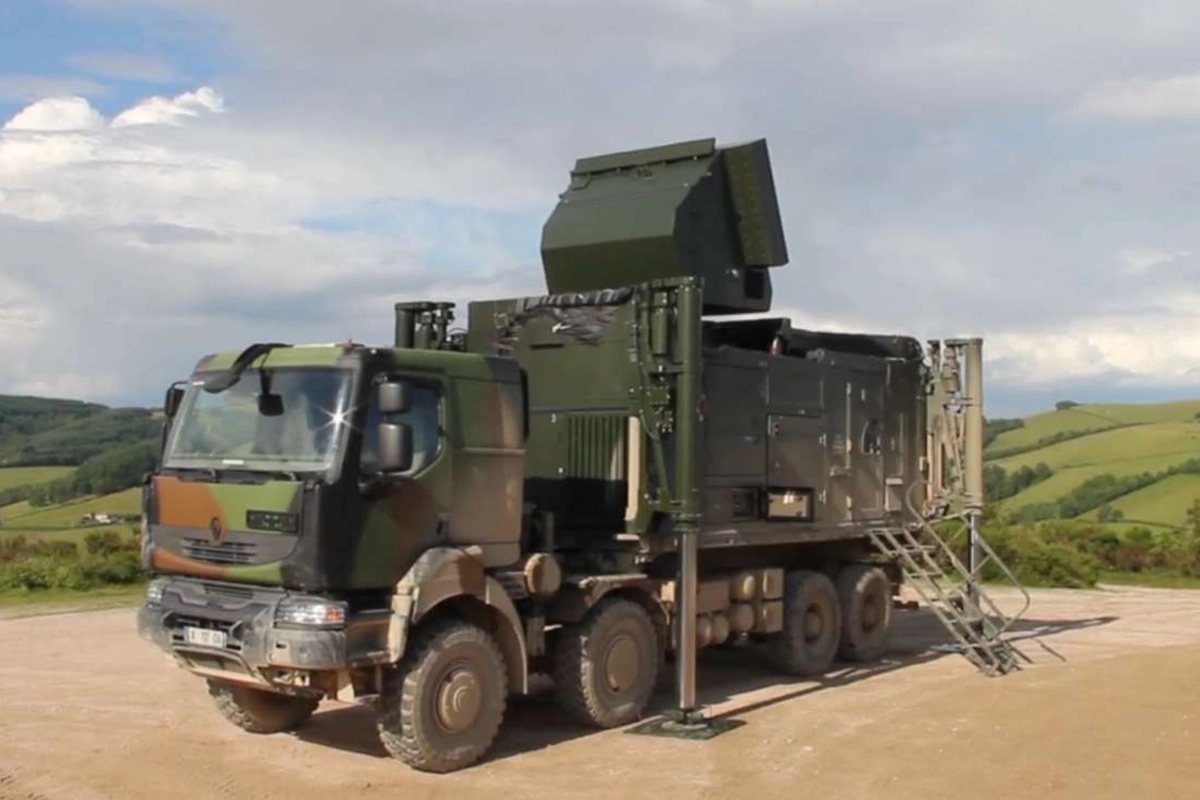
Moldovan President Maia Sandu recently disclosed that a GM200 radar, purchased by Chișinău from France for €14.5 million, failed to detect drones that had fallen near the Ukrainian border.
Photo credit: Thales
Armenia continues its active rearmament, yet a lack of coherence and a clear strategy in procurement appears evident. The country buys what is available for sale, with France leading the way in efforts to supply Armenia’s arsenal with modern weaponry. Paris, eager to support Armenia, offers what it considers to be top-grade equipment. However, it doesn’t always take into account the specific needs and features required by the Armenian army. As a result, the outcome is often reminiscent of the saying, “We wanted the best, but it turned out as always.”
Recent events in Moldova may have raised concerns in Armenia. Moldovan President Maia Sandu recently disclosed that a GM200 radar, purchased by Chișinău from France for €14.5 million, failed to detect drones that had fallen near the Ukrainian border. According to media reports, Moldova’s Foreign Minister mentioned that these drones likely belong to the Russian armed forces and were possibly launched to locate Ukrainian air defense systems. Sandu noted that while the drones did not carry explosives or pose a direct threat to civilians, the failure of the costly French radar to detect them is troubling. This creates a concerning precedent for Armenia, which also purchased three Ground Master (GM200) radars.
Plans to sell these three radars to Armenia were disclosed by French Defense Minister Sébastien Lecornu last October during a meeting with Armenian Defense Minister Suren Papikyan. In addition to supplying the radars, France offered to train Armenian military personnel on their operation. The GM200 radar does have the capability to detect aerial targets within a 250-kilometer range (100 km in combat mode) and track surface targets. However, Russian experts believe integrating this system with Armenia’s existing air defense systems, which rely on the Russian S-300, is currently unfeasible. Without this integration, the GM200 can only perform a supporting role, and the Moldovan incident suggests that it may not be entirely reliable.
Similar concerns may arise regarding the recent purchase of Mistral man-portable air defense systems (MANPADS). While it’s unclear which specific model was offered to Armenia, the latest Mistral model has an interception range of up to 8 km, a significant advantage. Nevertheless, the system has its limitations. First, the Mistral requires a specialized setup, whereas the Russian counterpart Igla-Super can be shoulder-fired and weighs only 12 kg, providing greater mobility. Additionally, a single Mistral-3 missile costs around half a million dollars, with lengthy delivery times: for instance, Spain ordered these missiles in October last year and will only receive them by 2025.
The case of the Bastion armored vehicles is also worth recalling. Armenia initially ordered 24 of these vehicles from France, only to find later that the order had doubled. However, it was soon revealed that these vehicles were originally intended for Ukraine, which refused them due to doubts over their technical and combat capabilities. Dubbed “cardboard” vehicles, they offer insufficient protection against artillery shells and mines.
Armenia is therefore facing significant expenses — around €45 million — for the purchase of French radars that are unlikely to integrate effectively into its Russian-based air defense system. This procurement raises questions not only about the efficiency of these costly systems but also about Paris’s motives. France clearly aims to strengthen its influence in the region, using arms supplies as a political instrument. However, by offering Armenia radars that do not meet its technical requirements and fail to guarantee adequate protection, France essentially leaves its partner vulnerable, forcing it to invest heavily in equipment with questionable utility.
While France publicly declares its support for Armenia, its actions suggest otherwise. Instead of offering solutions genuinely beneficial for Armenia’s defense, Paris seems focused on selling its equipment without considering the specific needs of Armenia’s security system. This approach resembles an attempt to offload outdated or suboptimal equipment under a favorable presentation. Armenia, relying on France’s “friendly” gestures, may end up with technology that not only requires further investment but also falls short of modern standards of effectiveness and reliability.
Choosing France as the main partner for Armenia’s military modernization appears to have been a mistake. Rather than providing real support, France delivers arms that not only fail to integrate with Russian air defense systems but, as seen in Moldova, may even struggle to detect small targets like drones. Paris, therefore, seems more intent on promoting its interests by pushing its products on Armenia rather than providing genuine support.
Share on social media